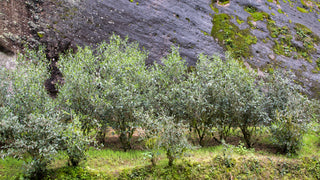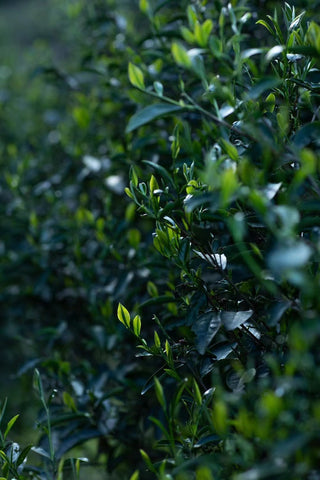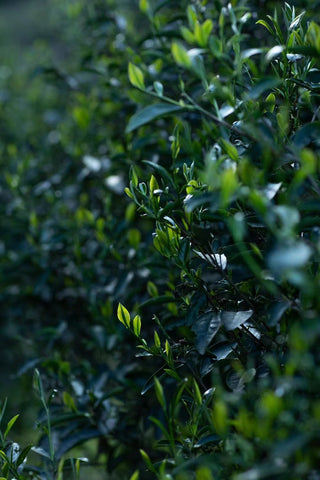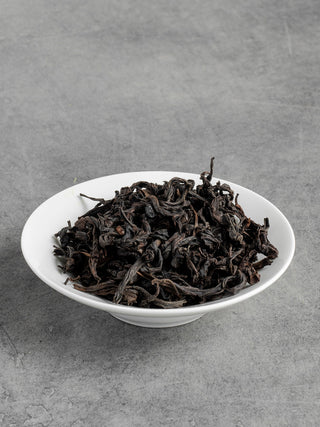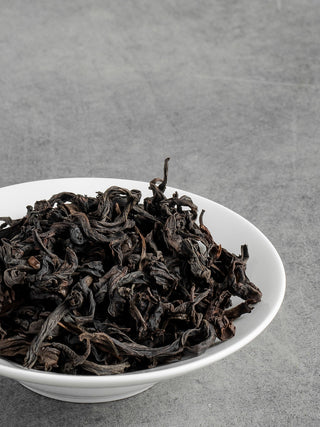When China pops up in a conversation, everyone gets different associations; teeming cities, high-speed trains, thousand years old history, spicy food, and huge distances. For a tea lover, like us, the first is always our favorite tea. With the complex world of taste – dried fruits, spices with a hint of smokiness, and a really nice warming effect – Wuyi Mountain’s teas quickly became part of our favorites. These can be an excellent choice for autumn days, walking under colorful trees.

One of China’s most famous tea-growing regions is the Wuyi Mountains, which are placed on the country’s eastern side in Fujian province. In the huge, 100.000 hectares UNESCO World Heritage Site there are amazing misty forests, long winding rivers, and rocky cliffs with deep valleys. The specialty of the area is laid in the untouched nature. In the different types of forests, 3000 plant species and 500 animal species found their home. Special environmental conditions complete the enchanting clarity of nature, thus Wuyi Mountain’s teas are outstanding. The Wuyi is a volcanic mountain, so the soils are rich in minerals here, while the annual rainfall is more than 2000 mm, the mist is almost constant and the relative humidity is always over 80%. These conditions are the best for growing tea plants.


Tea cultivation is almost a thousand years old tradition here, a few hundred varieties of the tea plant (Camellia sinensis) can be found here. Maybe the most famous tea pairing is Da Hong Pao – Big Scarlet Robe. Its story dated back to the 14th century. A scholar went for a really important exam at the imperial court in Peking. In the middle of the trip near the Wuyi mountains, he got sick, so he couldn’t continue his journey. The monks from the nearby monastery offered him some tea, which soon cured the scholar. He could go on and finally, he passed the exam with the highest point. The emperor gave him a scarlet robe as a symbol of glory. He went back to the Wuyi mountains towards home and spread the scarlet robe to the tea bushes, as a sign of gratitude. These hundred-year-old bushes are still alive, however, they don’t harvest them nowadays.


The categorization of teas is based on the making process and oxidation level of the leaves. The oolong teas – whose name means ‘black dragon’ – are somewhere between green and black teas. In the Wuyi region, oolong teas are typically made, which are often called rock teas, due to the high minerality of the volcanic subsoil.
While in most of the tea regions they harvest several times, in the Wuyi Mountains they only harvest the leaves after spring bud break. After they hand-picked the 3-4 leaves shoots, placed them in baskets, and bring them out to the tea factories at the foot of the mountains. Firstly, the leaves are put on bamboo trays and let the sunshine whither them a bit, then placed the trays under a roof. During this withering process, the leaves tender, and the moisture content decreases. The next step is the shaking of the bamboo trays, thus the leaves slightly break, and the oxidation becomes more active, while new flavor and aroma compounds arise. The length of the shaking and resting processes is based on the tea master’s experience, the temperature, humidity and the condition of the leaves are the major factors. It requires a lot of experience and care. Then they bake the leaves in huge woks, over the fire, so the maturing stops, the moisture content lessens, and the flavors stabilize. They knead the leaves slightly to reach the required forms, meanwhile, the aroma compounds covered the leaves. As the last step, they place the leaves into bamboo baskets and smoke them over amber, the goal is the well-known firey, deep world of taste. In the Wuyi region, they do this special process firstly in may and secondly in the autumn, when the tea is finally ready. The moisture content decreases to 3-5%, so it will be fine for a long time. The tea master’s job required precision in this step too. A hint of smokiness could be pleasant in a tea, however just like in the case of the wine’s barrique maturing this is also can be too much.

Because of the constantly growing interest in Wuyi teas, the division of the area into smaller units was necessary. In this way name of the original rocky territory remain patchless. The plants in the ‘real rocky area’ (正岩, zheng yan) live on a thin soil layer, beneath that layer there is rich mineral content volcanic rock, and the plants’ roots easily reach this. Thus the teas from this area have an outstandingly complex world of taste, rich minerality, and deep, strong body. When we go out towards the ‘half rocky area’ (半岩, ban yan) the soil layer gets thicker and thicker. This area is also part of the Wuyi Mountains, however, the plants in this region absorb a much lesser amount of minerals. Teas from the third territory are named ‘river ban teas’ (洲茶, zhou cha). This area is far from the protected Wuyi zone, the plants in this place barely reach the volcanic subsoil, and thus the teas are much weaker here.
The name of the most famous Wuyi teas is based on a legend or a world of taste. There are a few; Rougui – 肉桂 – Cinnamon, Tie Luo Han – 铁罗汉 – One who is worthy – Iron Arhat*, Da Hong Pao – 大红袍 – Big scarlet robe, Shui Xian – 水仙 – Water immortal*, Mei Zhan – 梅占 – Plum fragrance, Jin Mao Hou – 金毛猴 – Golden monkey. The different types are harvested from different plant varietals and the processing is also slightly different. However, all the teas from the Wuyi Mountains and especially from the ‘real rocky area’ (正岩, zheng yan) have a full-bodied minerality because of the volcanic subsoil. Beneath the smokey, firey notes we can discover dried fruits with a nice hint of spiciness.

When drinking high-quality teas the scan of the effects is not rare. Worth to discover our body’s reactions and our mood’s possible changes. Where does the tea take us? We often find the activity, momentum, concentration, and enormous calmness while drinking Wuyi teas. You can taste several excellent Wuyi teas in the Lánchíd street teashop, Budapest, all from the ‘real rocky area’ (正岩, zheng yan).
To make Wuyi teas worthwhile have fresh spring, mineral water, or filtered water, and heat it up to 95 °C. Put 5-6 grams of the fine leaves into a 150 ml tea-making tool, and use 15-20-30 seconds brewing times. An outstanding Wuyi tea can be steeped 10-12 times, the effect is often not describable.

* The arhat, arahat, or arahant (Sanskrit: अर्हत arhat; páli: arahat, arahant) is a Buddhist practitioner, who reached a high level of realization. The original meaning of arhat is ‘one who is worthy’.
* 仙 Xian – The Chinese immortal character has two parts. The man and the mountain, the man who lives in the mountain. 人 山
The text is based on an article by Roadster magazine, 2022.
It was scripted, edited, and translated by Tibor Szulágyi.
Photos by Gábor Tálos.
